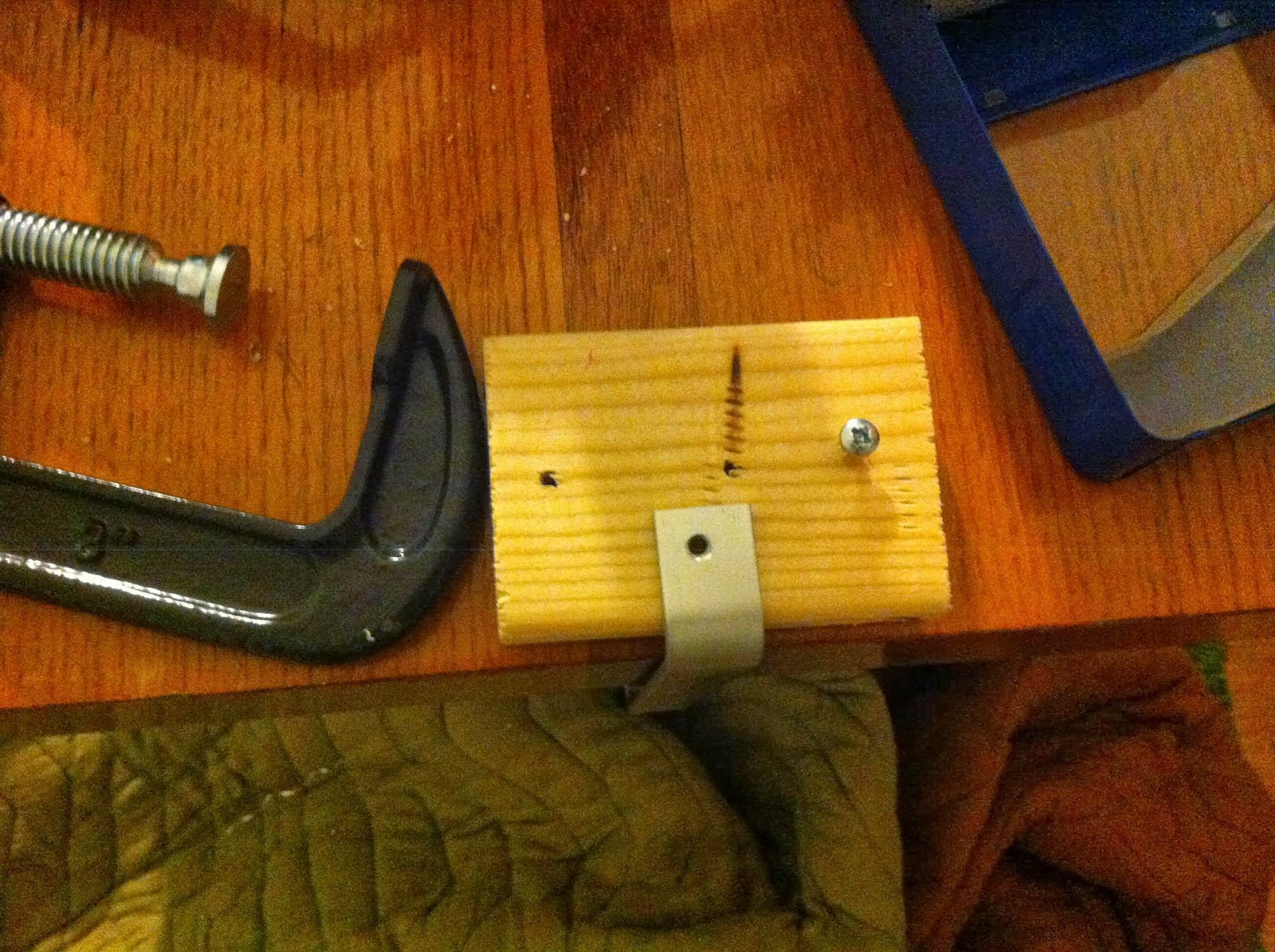One part of skateboarding that I'm good at is appreciating the artwork. One of my talented sisters produced a deck and I wanted to mount it on my wall with a little style.
The idea is to have the board mounted out from the wall far enough that the curvature of the board doesn't touch the wall, but have it secure enough that the board won't rock (and it can support a floating frame).
Preliminary Work
 |
| The general idea |
I decided to go with a modified french cleat. I staggered the cleats to ensure I had enough surface area to support the board from only the top two holes without losing stability
 |
| Revisions were necessary |
The frame mount would also be attached at the top of the removable block, and would support the frame from the top-center position.
Materials
> Wood
> 2 square bend hooks
> A length of aluminum flat about 11" long
> Self leveling frame brackets (the same width as the flat)
> 2", 3" screws
> clamps, saw, grinder, drill, glue, tape measure, coffee
 |
| I'll make it work |
The Process
The Mount
I offset two boards and cut them at about a 30 degrees, squared them up and screwed them together, adding another block for the mounting face.
I used a grinder to cut the hooks to the thickness of the board, beveled the edge to remove the sharp bits, and screwed them into pilot holes in the mount face.
I added some non-slip matting for cushioning and... well... to stop things from slipping.


2 more screws, and it's up on the wall.
 |
| It's on the level |
 |
| Phase one, complete |
The Frame
I bent the aluminum flat into the frame support, drilled a hole in the bottom, and fastened it to the removable mounting block.
I used some primed moulding to glue a frame together. I used some filler to fix the seams and painted it. Add frame bracket to taste.
The Product
 |
| Add the board... |
 |
| and a cherry on top. |



























